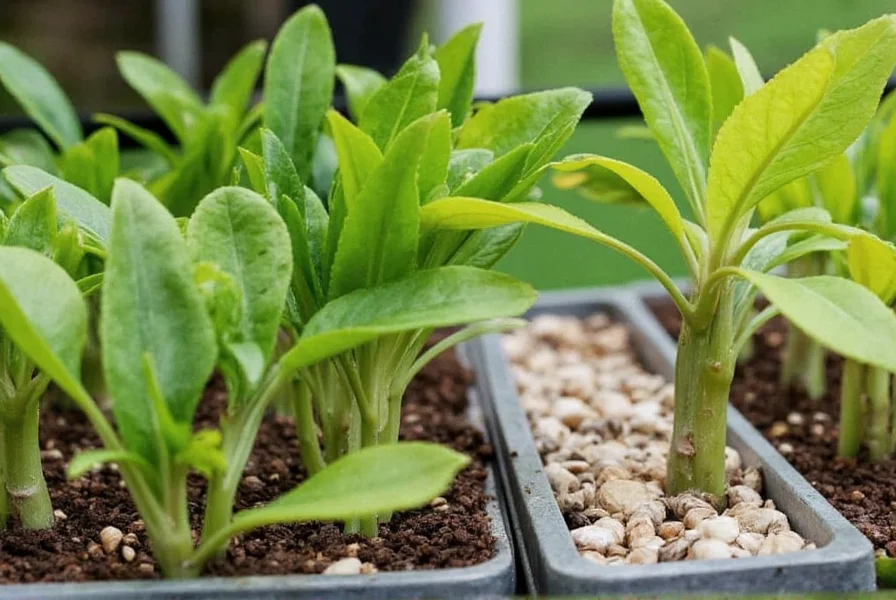Growing ginger at home is surprisingly accessible for both novice and experienced gardeners. This tropical perennial, native to Southeast Asia, produces aromatic rhizomes prized for culinary and medicinal uses. With proper technique, you can cultivate your own fresh ginger regardless of your climate zone.
Understanding Ginger Growth Requirements
Ginger isn't a true root but an underground stem called a rhizome. It grows horizontally beneath the soil surface, sending up leafy shoots while developing new rhizome sections. The plant typically reaches 2-3 feet in height with narrow green leaves and occasionally produces yellow or white flowers.
Successful ginger cultivation depends on mimicking its natural tropical environment. The ideal temperature range is 71-77°F (22-25°C), with high humidity levels. While ginger tolerates partial shade, it performs best with 2-5 hours of morning sunlight followed by afternoon shade. Full sun exposure can scorch leaves in hot climates.
Preparing to Grow Ginger
Selecting quality rhizomes is your first critical step. Choose plump, firm ginger roots with multiple 'eyes' or growth buds from a reputable source. Organic grocery store ginger often works well since conventionally grown ginger may be treated with growth inhibitors. Look for pieces about 1-2 inches long with visible buds.
Timing your planting correctly ensures optimal growth. In tropical regions, plant just before the rainy season. In temperate climates, start ginger indoors 2-4 weeks before your last frost date, then transplant outdoors when soil temperatures reach at least 68°F (20°C). Container growing allows year-round cultivation with proper indoor conditions.
Soil Preparation for Optimal Growth
Ginger requires loose, well-draining soil rich in organic matter. The ideal soil composition includes:
| Soil Component | Percentage | Purpose |
|---|---|---|
| Compost or well-rotted manure | 30% | Provides nutrients and improves soil structure |
| Peat moss or coconut coir | 20% | Maintains moisture without waterlogging |
| Garden soil | 40% | Provides base structure |
| Perlite or sand | 10% | Enhances drainage |
Maintain a slightly acidic to neutral pH between 5.5 and 6.5. Test your soil before planting and amend as necessary using sulfur to lower pH or lime to raise it. Raised beds work exceptionally well for ginger cultivation as they prevent water accumulation.

Planting Ginger Rhizomes
Follow these steps for successful ginger planting:
- Prepare rhizomes: Cut larger pieces into 1-2 inch sections with 2-3 eyes each. Allow cut surfaces to dry for 24-48 hours to prevent rot.
- Choose container or garden bed: Use containers at least 12 inches deep with drainage holes. For garden beds, prepare soil to 8-10 inches deep.
- Planting depth: Place rhizomes with eyes facing up, 2-4 inches below soil surface. Space plants 8-12 inches apart.
- Initial watering: Water thoroughly after planting, then allow top inch of soil to dry before watering again.
For container growing, use a high-quality potting mix rather than garden soil. Terra cotta pots work well as they allow better moisture regulation than plastic containers.
Ongoing Care Requirements
Watering schedule is crucial for healthy ginger growth. Maintain consistent moisture without waterlogging. During active growth (spring through summer), water when the top inch of soil feels dry. Reduce watering in fall as plants prepare for harvest. Container plants typically need watering every 2-3 days during warm weather.
Fertilization supports robust rhizome development. Apply a balanced, organic fertilizer every 4-6 weeks during the growing season. A 10-10-10 or similar formula works well, or use compost tea for a more natural approach. Avoid high-nitrogen fertilizers which promote leaf growth at the expense of rhizome development.
Pest and disease management requires vigilance. Common issues include:
- Root rot: Prevent by ensuring proper drainage and avoiding overwatering
- Leaf spot: Remove affected leaves and improve air circulation
- Spider mites: Spray with insecticidal soap or neem oil solution
- Mealybugs: Treat with alcohol-dipped cotton swabs or horticultural oil
Harvesting Your Ginger Crop
Timing your harvest correctly determines yield and quality. Ginger reaches maturity 8-10 months after planting when leaves yellow and die back. For fresh 'green' ginger, you can harvest earlier at 4-6 months, but yields will be smaller.
To harvest, carefully dig around the plant perimeter to avoid damaging rhizomes. Lift the entire plant, then separate the rhizomes from the stems. Shake off excess soil but avoid washing until ready to use.
Proper storage extends shelf life. Store unpeeled ginger in a paper bag in the refrigerator crisper drawer for 2-3 weeks. For longer storage, freeze peeled ginger or preserve in vinegar. Drying ginger slices creates a shelf-stable product lasting several months.

Troubleshooting Common Cultivation Problems
Yellowing leaves often indicate overwatering or poor drainage. Reduce watering frequency and ensure proper soil aeration. If leaves yellow from the bottom up as the season progresses, this may signal natural maturation rather than a problem.
Stunted growth typically results from insufficient nutrients, inadequate sunlight, or overcrowding. Amend soil with compost, adjust light exposure, or thin plants to improve spacing.
No rhizome development usually occurs when plants receive too much nitrogen fertilizer or insufficient growing time. Focus on balanced nutrition and patience—ginger requires a full growing season to develop substantial rhizomes.
Extending Your Ginger Growing Season
In cooler climates, extend your growing season by starting ginger indoors 8-10 weeks before last frost. Use grow lights to provide adequate illumination. When transplanting outdoors, choose a sheltered location protected from strong winds.
For year-round production, maintain container-grown ginger indoors during winter. Place near an east-facing window or under grow lights, keeping temperatures above 60°F (15°C). Reduce watering during the plant's dormant period but don't allow soil to completely dry out.
Frequently Asked Questions
Can I grow ginger from store-bought ginger?
Yes, you can grow ginger from grocery store purchases, but organic ginger works best as conventional ginger may be treated with growth inhibitors. Choose plump pieces with visible growth buds, allow cut surfaces to dry for 24-48 hours, then plant in well-draining soil with the buds facing up.
How long does it take to grow ginger to harvest?
Ginger requires 8-10 months to reach full maturity when grown for dried or stored use. For fresh 'green' ginger with thinner skin and milder flavor, you can harvest at 4-6 months, though yields will be smaller. The plant signals readiness when leaves yellow and die back.
What's the best way to store harvested ginger?
Store unpeeled ginger in a paper bag in the refrigerator crisper drawer for 2-3 weeks. For longer storage, freeze peeled ginger chunks or preserve in vinegar. Drying ginger slices creates a shelf-stable product lasting several months. Avoid washing ginger until ready to use to prevent premature spoilage.
Why are my ginger plants not producing rhizomes?
Insufficient growing time, improper fertilization, or inadequate light commonly cause poor rhizome development. Ginger needs 8-10 months to develop substantial rhizomes. Avoid high-nitrogen fertilizers which promote leaf growth at the expense of rhizomes. Ensure plants receive partial shade with 2-5 hours of morning sunlight for optimal rhizome production.
Can ginger be grown indoors year-round?
Yes, ginger adapts well to indoor container growing. Use a pot at least 12 inches deep with drainage holes, place near an east-facing window or under grow lights, and maintain temperatures between 71-77°F (22-25°C). Keep soil consistently moist but not waterlogged, and fertilize monthly during active growth. Reduce watering during winter dormancy but don't let soil completely dry out.











 浙公网安备
33010002000092号
浙公网安备
33010002000092号 浙B2-20120091-4
浙B2-20120091-4